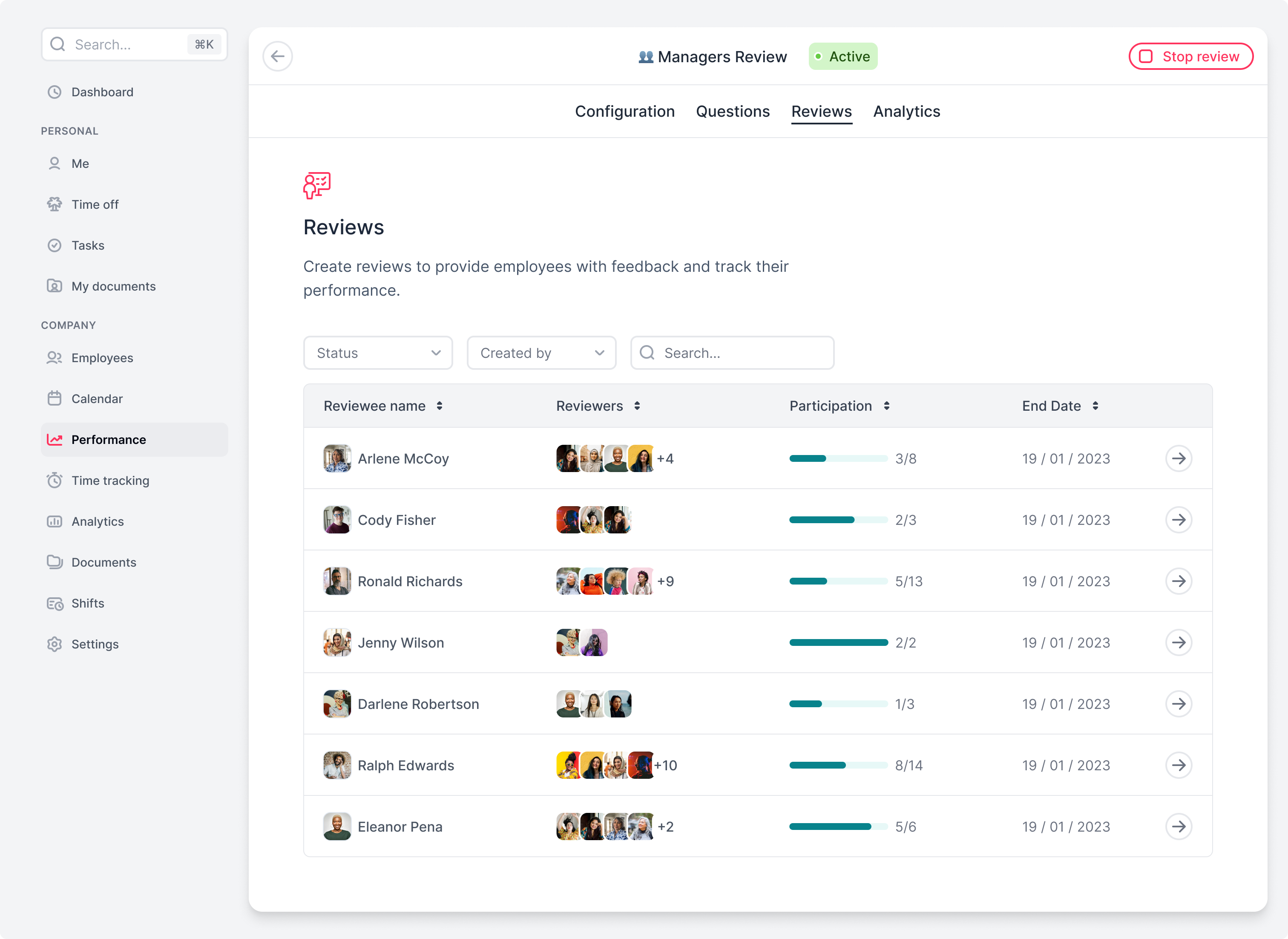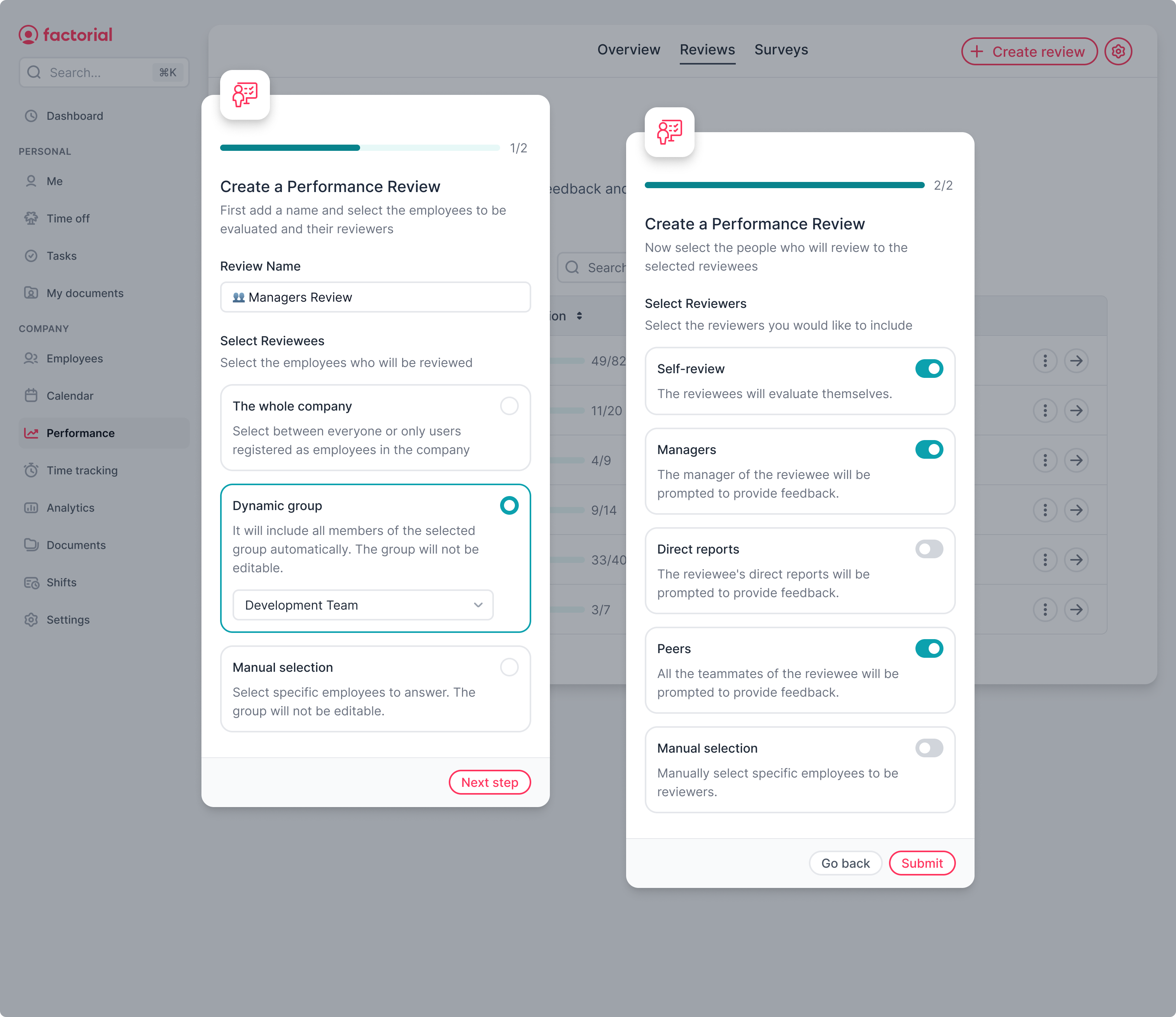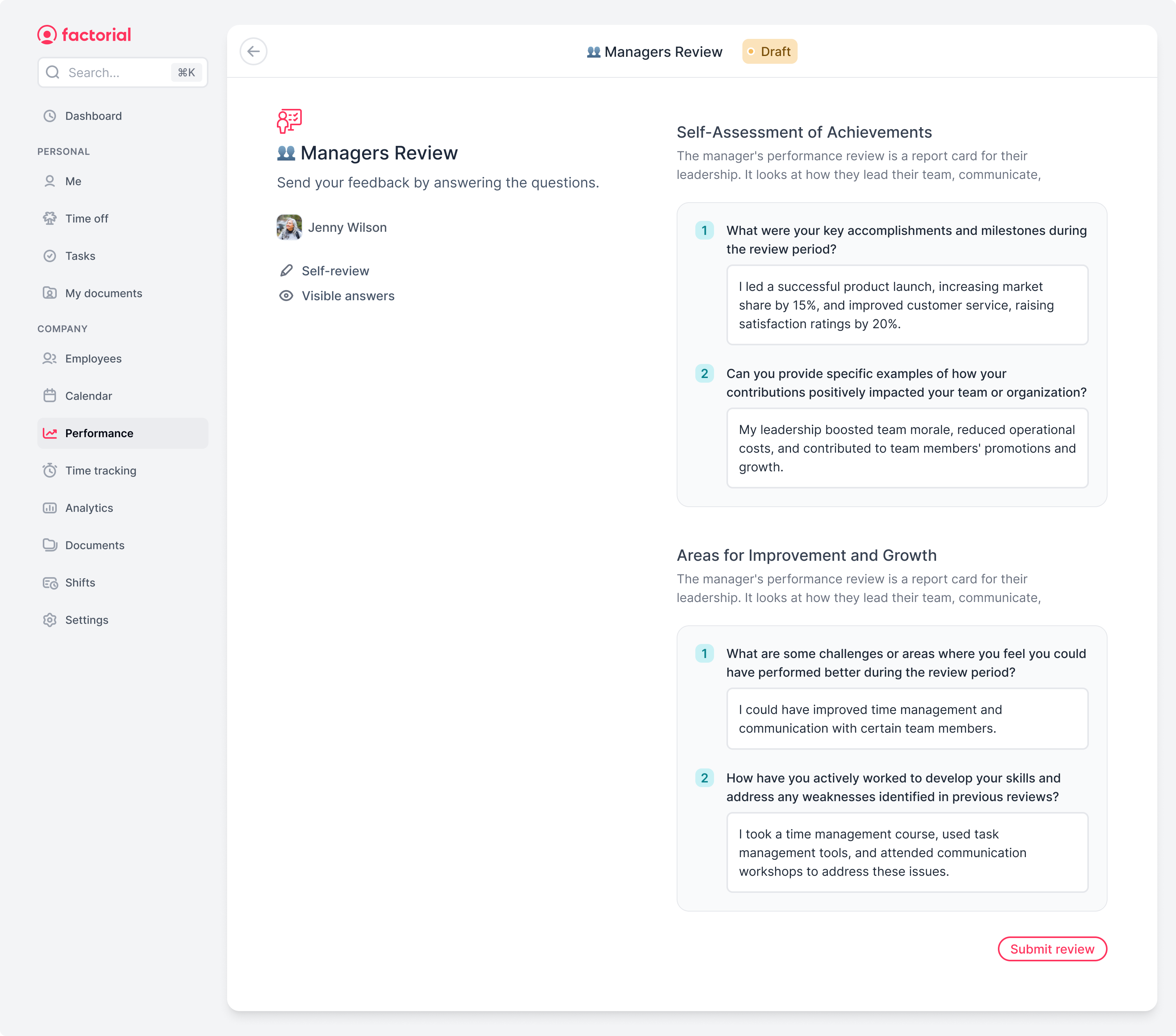Factorial Performance Review App
My Role
Product Designer
Team
- Gerard Clos Staff Software Engineer
- Jesús González Senior Software Engineer
Timeline
Q3 2020
Overview
New vertical in Factorial built from scratch to evaluate employee performance. Completely customizable to adapt to each company's needs.
Context
I worked as the solo product designer on this project. Our mission was to be the all-in-one HR tool for companies. Not covering one vertical could mean losing a client. Factorial lacked a performance review tool, and it was a big deal for companies, so we built it.

Problem
Companies and HR teams want to have all data centralized to make decisions based on insights and also make management easier.
But Factorial was missing an important part: how to evaluate employee performance and potential to trigger actions like promotions, detect problems, implement trainings, etc. This includes not only the work done but also soft skills and relationships with colleagues.
We were losing clients because of this. They were using other tools to evaluate performance and wanted to have everything in one place, which meant churn and it was the reason #1.
Opportunity
We had an opportunity to impact the business and fill one of the missing pieces in the product to keep customers and close new ones.
Since this was something completely new, we had a greenfield opportunity, so we tried to build everything in just one quarter.

Research
Building an HR tool is difficult because every company has different needs depending on its country, size, industry, and culture. We confirmed this again by talking to companies that had already churned, companies that were at risk, and others that were happy with the product: every company has its own performance review process.
We found several ways to do performance reviews. Some companies wanted to evaluate employee performance from a 360° view (manager, peers, direct reports, and self-review) to just a manager review.
The questions for each type of review were different. The results were to be translated into a score of some competencies or some action items.
The frequency could be monthly to annually and automatically include new employees to avoid manual tasks.
Key User tasks
As a manager, I want to evaluate my team's performance so that I can identify problems and promote the best employees.
As an admin, I want to configure performance reviews automatically to avoid manual tasks such as adding new employees.
As an admin, I want to be able to dynamically select the reviewers and reviewers so that I can avoid manual tasks and adapt the review process into Factorial.
As an admin, I want to be able to change the performance review questions so that I can adapt to the company's needs for the next period.
As an admin, I want to be able to hide reviews from reviewers so that I can customize and curate feedback before it is shared.


Solution
We implemented a new section for the performance review in Factorial. We designed it to be completely customizable so that each company can adapt it to their needs.
The first step is to select the reviewers. The option to do it manually and dynamically was a must, because reviewing a team that has new members every month would mean remembering to add them manually.
Then the second step is to select the reviewers but they may different depending on the reviewee. Maybe the manager of one person is not the same as the manager of another person. So we had to assign the reviewers dynamically.
The questions also were customizable for each review type, is not the same a review from a manager than a self-review.
And finally, the follow-up of the review to see who still needs to answer before closing it and then the results in the Factorial Reports section to be able to mix it with other data.
Key Features
Dynamic reviewees and reviewers selection.
Different question sets for each reviewer type.
Reviewer tracking to see who has yet to respond.
Anonymous reviews. Show/hide reviews to the reviewees.
Success
We won back 4 clients who were churning because of this.
After 1 quarter, the review reason disappeared from the churn and the closed lost reasons in the CRM.
40% of companies received at least one review in the first quarter after launch, so they got value from the new feature.